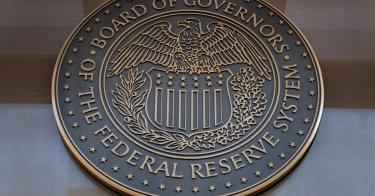With the collapse of several banks in the last few weeks, many fear that their deposits aren’t safe and another financial crisis is looming. Worse, the fight in Washington over raising the debt ceiling threatens to strain the system still more. These two issues may seem worlds apart, but both flow from the same source: excessive government spending.
Beginning in 2020, Congress suspended the debt ceiling limit on government borrowing and began spending trillions of dollars that it didn’t have—and that was atop the existing budget deficit. Like a family living beyond its means and running up credit-card debt, the government borrowed the money by selling bonds.
But the government not only borrowed trillions, it printed that much money at the same time. To prevent the new government bonds from crowding out private borrowing and driving up interest rates in a recession, the Federal Reserve essentially created the money for the government.
>>> Chaotic Consequences of Redefining Rules
But this flood of new money caused inflation and ensured interest rates would have to rise to help cool off price increases. That created a ticking time bomb in the financial world because banks had become dependent on the low interest rates, which would eventually end.
Remember, when we put a dollar on deposit at a bank, the dollar doesn’t stay in a vault. The bank lends most of it out, which is how you can go to a bank and get a loan, such as a mortgage. You are borrowing other depositors’ money, and the bank is like a middleman, making the transaction happen. Banks can also lend money to businesses by buying bonds.
When interest rates were artificially low because of the Fed’s money printing, banks made loans at rock-bottom rates, including for bonds, on a large scale. Since bond prices move in the opposite direction of interest rates, when rates went up, bond prices went down.
At the same time, some banks had large withdrawals by depositors who needed their money back. But because the banks had used those deposits to buy bonds, they had to turn around and sell the bonds in order to get the money back to pay depositors. That’s when the financial time bomb went off, because the bonds had lost value from rising interest rates. The banks couldn’t raise enough cash to pay everyone back.
This entire scenario was made possible in large part because of the record-shattering spending by Congress and the president. And this is a point of policy, not politics—both Democrats and Republicans have been complicit in this overspending. Likewise, the Fed, which is supposed to be an independent check on spending and inflation, has yielded to the big spenders in D.C.
>>> Biden Bails Out the Rich and the Reckless
High levels of spending mean borrowing and printing money, along with artificially low interest rates. That, in turn, causes inflation and distorts prices of investments, making it nearly impossible for people and businesses alike to plan for the future. It also creates asset bubbles, like the housing bubble that collapsed in 2007, or the bond collapse happening in real time today. Unstable prices lead to an unstable banking system.
These financial crises are the bitter fruit of the tree of government profligacy.
The solution is not to raise the debt ceiling but enforce it. Government must stop overspending and learn to live within its means. Tax revenue has never been higher, so that is clearly not the issue; the problem is runaway spending.
Taking that away is like removing the first domino in a line so that there’s nothing left to start the chain reaction. If we hope to avoid the next financial crisis, we must first stop creating them.
This piece originally appeared in ArcaMax




